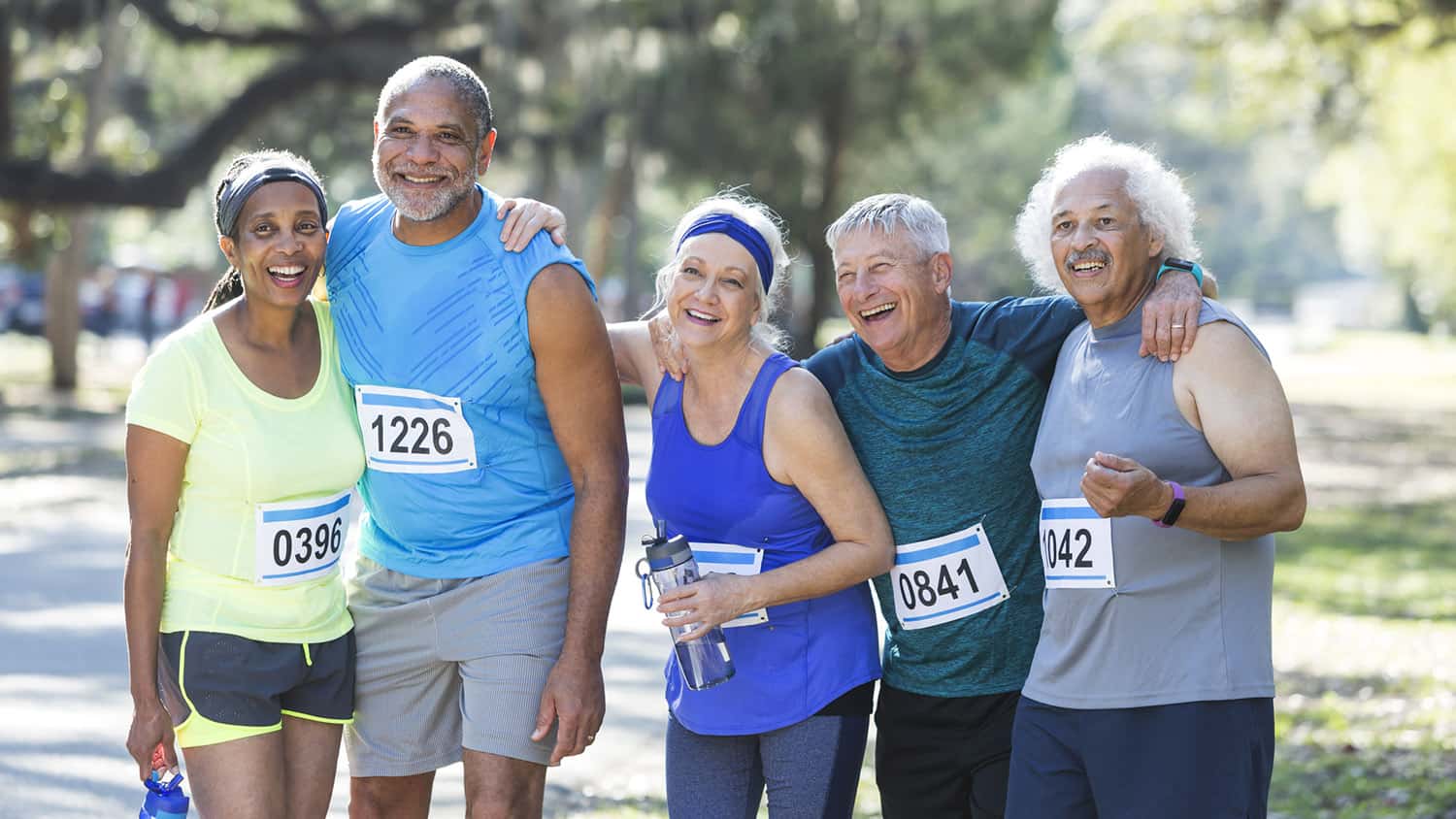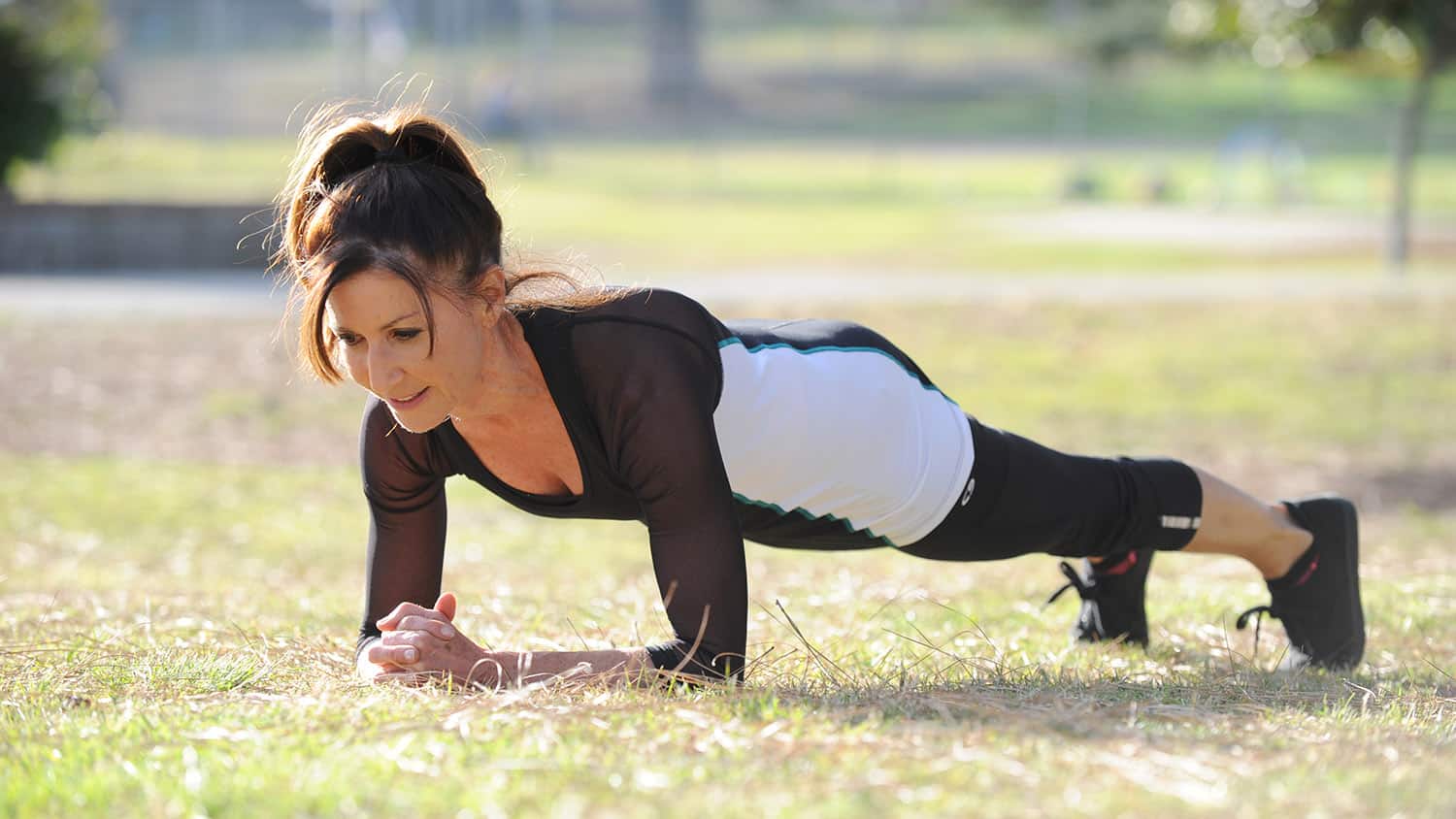Why You Need to Practice Falling After 60
“Until you actually learn to fall, your nervous system will never truly know that it is actually safe to fall.” – Dr. Shante Cofield
I spend the majority of my time discussing concerns about falls with my clients, so it’s on my mind often. As a physical therapist specializing in empowering adults throughout the aging process, both the future and current risk of falls comprise the number one concern each of my clients expresses.
To guide them through this process, I have to help them analyze both the physical and psychological risk factors. Because they both play a major role.
The Purpose of Controlled Stress
Another one of my responsibilities is to help all adults adopt the forms of physical activity and exercise they enjoy. We’ve all heard of the health benefits of physical activity, but do we know they are created by exposing ourselves to controlled stress?
This defines the actual purpose of exercise – or putting yourself in any uncomfortable situation: to allow your body to adapt by exposing yourself to controlled stress. Small amounts of stress are what make you resilient, in both mind and body. This is how you train your body to recover from physiological stress.
Falling follows a similar concept. By exposing yourself to controlled falls, you’re prepared for the real deal. When I tell my clients that they should be practicing falling, they all look at me in shock. My purpose is to help them prevent falls in the first place, so why would I give this counterintuitive advice?
For several reasons, so let’s break it down. And before we start, I would advise seeking the assistance of a trained professional, such as a physical therapist, before beginning a controlled falls program on your own.
Falls Defined
When we talk about falls, it helps to have an understanding of what actually defines a fall as there is confusion around the term. The definition of a fall is “any uncontrolled descent.” A common misconception is that it doesn’t count as a fall if you caught yourself on something.
But I have news: even that is still a fall.
If you plop into a chair every time you sit down, that’s also a fall. And it’s only natural that we freeze up and become fearful of any situation where we aren’t in control.
Common Misconceptions About Falling
All Falls Can Be Prevented
“Falls don’t ‘just happen’ […] and people don’t fall because they get older.” – National Institute on Aging
We’ve all heard about the dangers of falls in older adults. The statistics are alarming. And we all know someone it’s happened to. But here’s the deal: not all falls can be prevented. And that’s just life. The problem comes in when falls become too frequent or there’s an inability to recover from a fall.
The antidote to this is to practice falling so your behavior during a fall becomes reflexive. The act of practicing falling is an act of acceptance.
Learning to let go of the things we can’t control and surrendering to them. And being prepared for those unknown circumstances gives us the confidence to know that by surrendering everything will turn out for the best.
You Can’t Learn to Fall Right
“The impact of a fall has more to do with the state of the body doing the falling – the interface between a body and a particular surface.” – Katy Bowman, Dynamic Aging: Simple Exercises for Whole-Body Mobility
The less rigid you can be during a fall, the better. Rigidity leaves when fear leaves. The more you practice falling, the less likely you are to become fearful and rigid.
Imagine a brittle object falling to the ground. It shatters the moment it hits. Think instead of a more pliable object. Pliable objects are generally fine after hitting the ground. By changing the composition of your body, you can make yourself less likely to be injured during a fall.
A stronger, more flexible person will adapt to the ground better than someone lacking muscle mass with a lot of joint stiffness. By implementing a simple, daily mobility and strengthening program you can better protect yourself in the event of a fall.
Fear Plays a Major Role
“We’ve essentially mislabeled ‘scared gait’ as ‘senior gait’.” – Katy Bowman, Dynamic Aging: Simple Exercises for Whole-Body Mobility
One of the reasons we fall as we age is that we become less playful with our mobility and more cautious. The irony is, this fear makes us more likely to fall to begin with.
One of the strongest risk factors for having a fall is the fear of falling in the first place. This is stronger than any other physical risk factor, like loss of strength or balance, that might contribute to falls.
Fear of falling can exist whether or not there’s been a fall in the past. Moreover, those who haven’t had a fall and are fearful are more likely to fall than someone who has fallen in the past and isn’t fearful of falling.
Challenge Yourself with Controlled Falls
So, avoid developing this fear of falling by finding small ways to physically challenge yourself in your environment daily. This also gives your brain health a boost, ensuring that your mind and body maintain a strong connection. Life should be playful and continue to approach it that way.
By spending more time on the floor ON PURPOSE, practicing falling, and conditioning your mind and body to be able to handle the unknown, you can avoid becoming one of the alarming statistics behind falls in older adults. It’s never too early or too late to start thinking about this.
If you aren’t sure where to start, I highly recommend seeking the help of a trained professional, like a physical therapist or movement coach. Once you have the confidence to practice falling, make it a daily habit.
Continue to build on your practice and see where it takes you. Not only will you reap the physical benefits, but there is something so powerful about learning to surrender to the unknown in all areas of life.
Let’s Have a Conversation:
What do you know about falling? Have you experienced a fall? How did that go? Have you heard of controlled falling? Does it sound like something you’d like to try? Please share your thoughts with our community!
Tags Fitness Over 60







I’m 72 and I’ve fallen twice while riding my bike. The moment the fall’s occurred I knew I was ok, didn’t break anything, and got immediately up and back on the bike. Although I don’t practice falling I am not afraid. I won’t allow fear in my head. It would hold me back right!?!
Years ago…many many years ago I had this idea to try skydiving. One of the things they taught you was how to land when you fell. It has come in handy these last couple of years when I have fallen. A big dog i was walking took off suddenly pulling me off my feet. I knew instantly I was going to fall and everything I had learned came back. The brain works amazingly fast. In a nano second I figured out where and in what direction I was going to fall, relaxed and rolled appropriately. I was not stiff or sore after and I had a small bruise on my elbow. I have had 2 minor falls this past year both involved running.. The trick is to accept that you are going to fall and relax into it.
1. I never did get up the nerve to jump from a plane.
2. The dog was chasing a rabbit!!
3. I had on totally wrong shoes for running lol.
4.. I am 72 now.
I recently fell on a pickle ball court as my sneakers slid on the floor…luckily I didn’t break anything, but beware: there are special “pickle ball” sneakers for indoor playing! Many seniors fall during this game! I would love to “ learn to fall!”
I have never heard of controlled falling. Maybe AARP could sponsor such a class for seniors. I would be interested in practicing “controlled falling”. I am a very physically active senior and believe in “moving” my body.
Phyllis